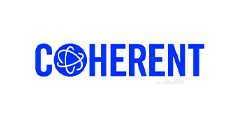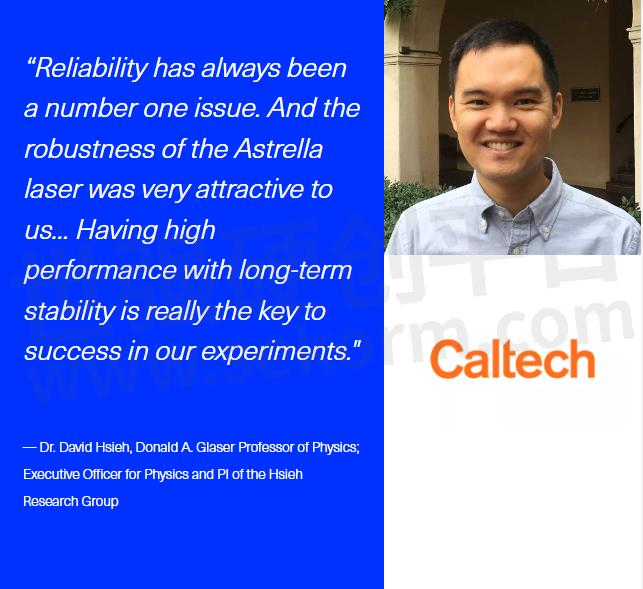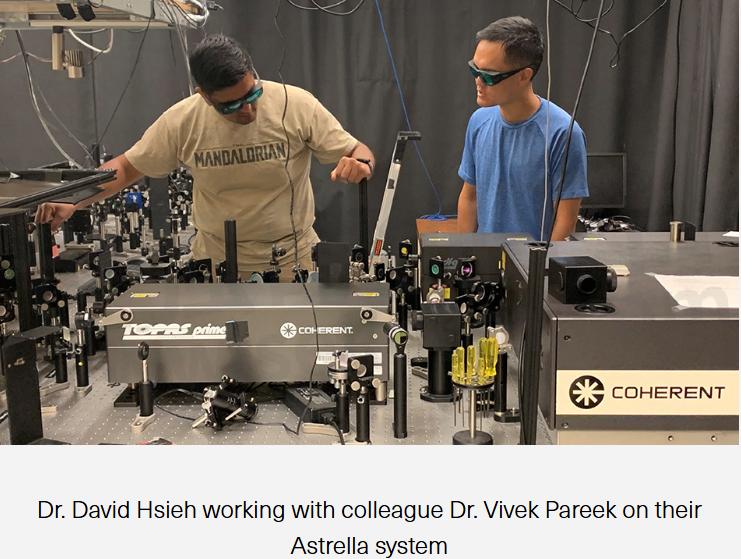Caltech: Unlocking Quantum Mysteries

Scientific discovery is driven by breakthroughs that drastically expand our understanding of the universe, particularly in the realm of quantum mechanics. Max Planck's quantum theory is foundational to the birth of this field and has laid the groundwork for quantum mechanics, which was essential for exploring atomic and subatomic phenomena.
Today, Dr. David Hsieh, PI of the Hsieh Research Group at the California Institute of Technology, is at the forefront of this journey with his work in quantum materials that unravel the complex interactions of strongly correlated electron systems. His research has made significant strides in understanding the exotic phenomena that arise from these interactions. Central to this groundbreaking work is the use of the COHERENT Astrella Laser, which has been integral to the success of Dr. Hsieh's research, enabling him and his team to probe and manipulate quantum materials with unprecedented precision and accuracy as well as allowing Dr. Hsieh unprecedented versatility. To expand on the versatility of the laser, Dr. Hsieh said, "The laser is entirely used by my lab. It's not a shared instrument... Our lab has several projects funded under different grants, each requiring different types of probing... many are driven by the same laser."

Pioneering Exploration of Strongly Correlated Electron Systems
Dr. Hsieh's research focuses on quantum materials, specifically those known as strongly correlated electron systems. These materials are characterized by the intense interactions between electrons, leading to collective behaviors that defy classical explanations. A significant part of Dr. Hsieh's research centers around Mott insulators, a class of materials that are insulating due to the strong interactions between electrons. Mott insulators are closely related to high-temperature superconductors and exhibit fascinating magnetic properties, such as antiferromagnetic order.
Dr. Hsieh's lab seeks to understand the microscopic properties of these materials using advanced laser techniques, exploring the interplay between charge and spin in these systems, primarily focusing on a type of quasi-particle known as the Hubbard exciton. Unlike traditional excitons, which are bound by Coulomb forces, Hubbard excitons are bound by magnetic interactions, offering new insights into the behavior of quantum materials.

Laser-Driven Discoveries in Antiferromagnetic Mott Insulators
In his latest paper, “A Hubbard exciton fluid in a photo-doped antiferromagnetic Mott insulator,” Dr. Hsieh explores the intricate dynamics of Hubbard excitons in Mott insulators using the Astrella laser.1 The study provides experimental evidence for the existence of stable Hubbard excitons, which can serve as a platform for testing many theoretical predictions . By leveraging time-resolved terahertz spectroscopy, Dr. Hsieh's team identified the unique spectral fingerprints of Hubbard excitons, uncovering their binding mechanisms and potential future material applications. The paper marks a significant advancement in the field of quantum materials, opening new avenues for research into the subtle interplay of spin and charge in these exotic systems as well as showcasing the sophisticated nature of the Astrella laser.
One of the key techniques frequently used in his research is pump-probe spectroscopy. This method involves the use of two synchronized laser pulses: one to excite the material and another to probe it. The Astrella laser, with its ultra-short pulses and high field intensities, is vital for the success of these experiments. These pulses allow his team to explore what happens when the materials are driven far from thermal equilibrium , revealing the dynamics of electrons, lattice vibrations, and more on femto- and picosecond timescales. The laser's exceptional performance ensures that the subtle and transient phenomena being studied are captured with the highest accuracy.
The Coherent Astrella laser has proven to be an indispensable research tool in Dr. Hsieh's lab. Its ability to produce stable, high-intensity pulses over extended periods is absolutely essential for the long-term experiments conducted in his lab, where precision is paramount. "The Astrella laser’s robustness and stability have allowed us to explore the quantum realm with minimal interference from environmental fluctuations, ensuring the accuracy and reproducibility of our results," says Dr. Hsieh.
Of note, the Astrella laser is exceptionally reliable, as evidenced by its more than 55,000 hours of continual use in his lab (with the exception of Christmas), an extraordinary achievement that speaks to the laser's engineering excellence. This long-term reliability has been crucial for Dr. Hsieh's research, as it has allowed uninterrupted progress on multiple projects, each pushing the frontiers of quantum materials science.
Reference:
Mehio, O., Li, X., Ning, H. et al. A Hubbard exciton fluid in a photo-doped antiferromagnetic Mott insulator. Nat. Phys. 19, 1876–1882 (2023).
- +1 Like
- Add to Favorites
Recommend
- Coherent Showcased Award-Winning 100G and 400G Coherent Transceivers at OFC 2023
- Coherent Demonstrated Next-generation Transceiver Technology for Digital Coherent Optics in Ultracompact Pluggable form Factors for Disaggregated Systems at ECOC 2023
- Coherent Introduces Wavemaker® and Waveshaper® Optical Solutions For Multi-Wavelength Transmissions
- Coherent Introduces I-Temp Micro-Pump Lasers for Extended Temperature Operation in Broadband Optical Access Networks
- COHERENT ISSUES ITS ESG REPORT 2023 AND SETS A NET ZERO GREENHOUSE GAS EMISSIONS TARGET OF FY2040
- Coherent Introduces 30 kW Laser Cutting Heads, Enabling Faster Cutting of Thick Sheet Metal
- Coherent Introduced 2x1000mW Dual-Chip Pump Laser Module for Optical Amplification in Optical Networks
- Coherent Introduces Diffractive Optical Elements for High-Power Industrial Lasers
This document is provided by Sekorm Platform for VIP exclusive service. The copyright is owned by Sekorm. Without authorization, any medias, websites or individual are not allowed to reprint. When authorizing the reprint, the link of www.sekorm.com must be indicated.





























































































































































































































































































































































































































































































































































































































































































































































































































































































